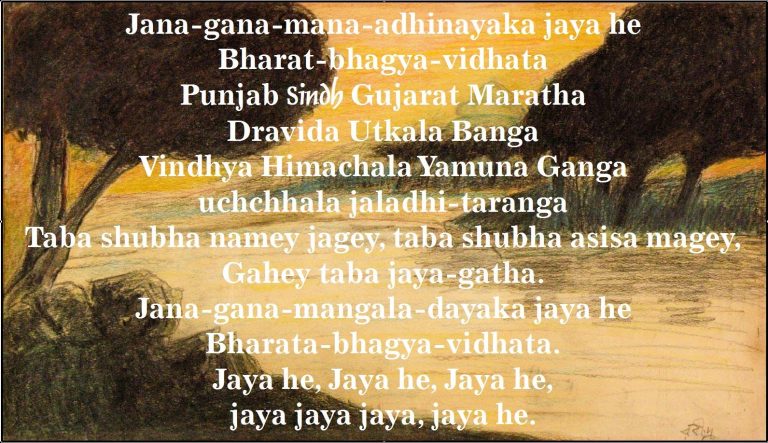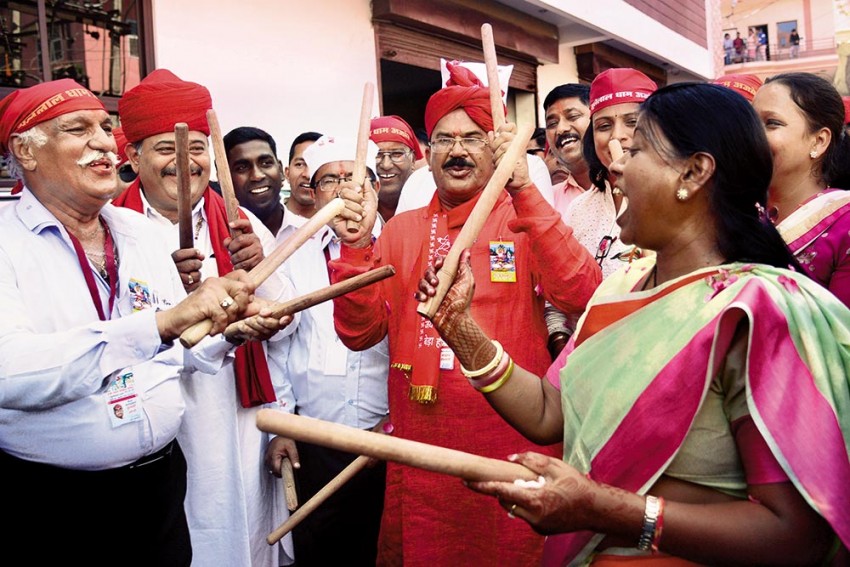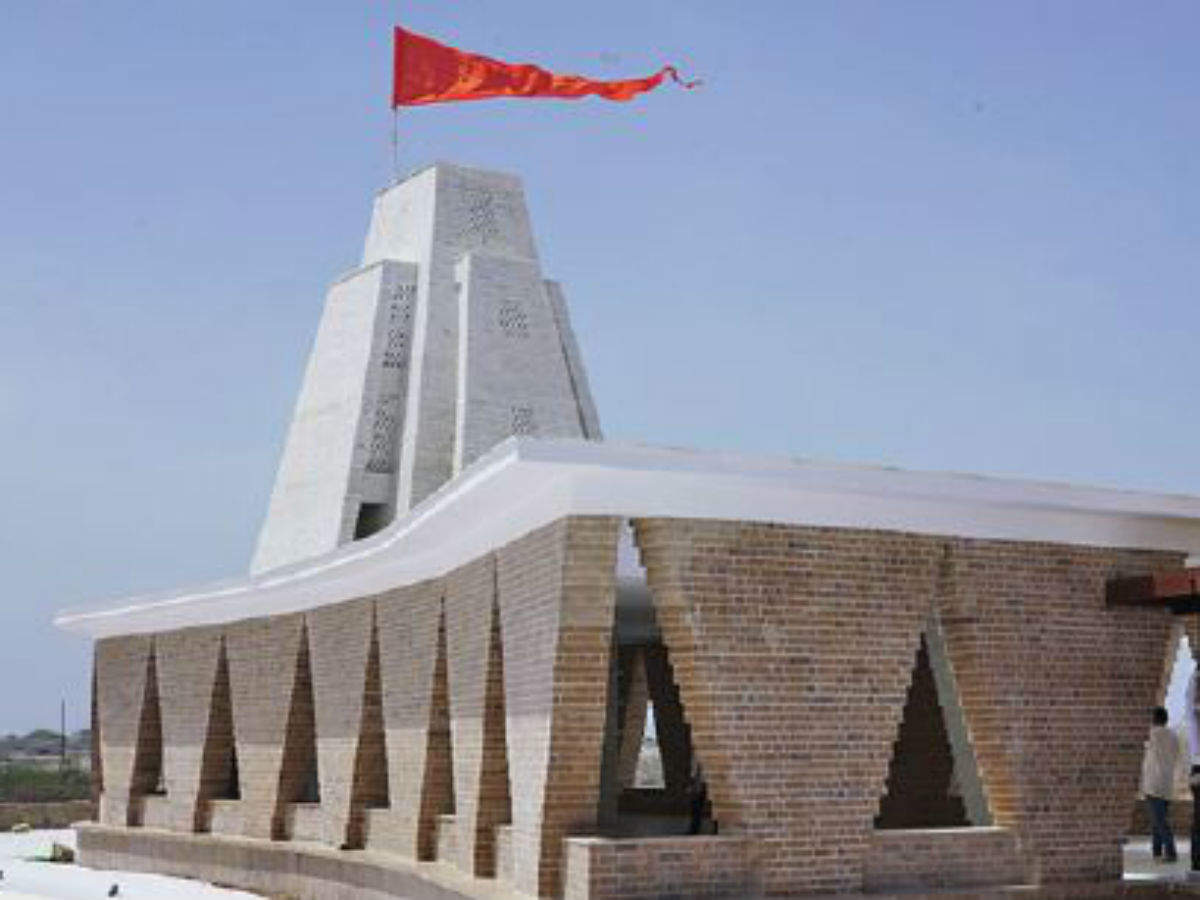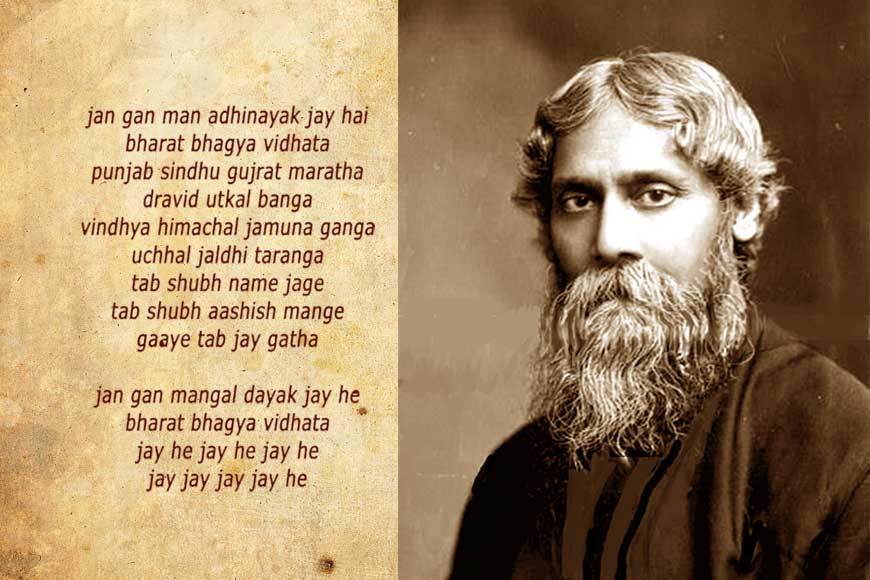
Acclaimed lawyer Ram Jethmalani had said, “Sindh has its own civilization, and as the cradle of Sufism, which distilled the essence of many religions, it is synonymous with India’s secularism.”
“Sindhis may be stateless, but they are still live representatives of this civilization. And as far as the anthem is concerned, Sindhis glow with pride when they hear the word “Sindh” in the national anthem. Do you want to take that away too?”
By Uttara Shahani
In 2005, the Supreme Court of India heard a petition from Sanjeev Bhatnagar, a speed-skater and advocate, to direct the government to delete the word ‘Sindh’ from the Indian national anthem since Sindh is now a part of Pakistan. As a sportsman, Bhatnagar had more occasion than most to sing the anthem, and it was while standing to attention to jana gana mana that he had arrived at the conclusion that Sindh did not belong in it.
Bhatnagar argued that since Sindh was the name of a province in Pakistan, its inclusion in the Indian anthem could raise an international dispute; that its presence was an infringement on the sovereignty of Pakistan and that ‘Sindh’ should be replaced with ‘Kashmir.’ Bhatnagar’s telepathic abilities were not verified; nonetheless he insisted that the singing of the anthem with the word ‘Sindh’ in it for over fifty-five years had been ‘hurting the feelings of over 100 crore people.’
We think of the partition of India, and we think of the division of territories. Most often, historians attend to the division of Punjab and Bengal ─ even if Assam was also divided. But Sindh’s ‘partition’ in 1947 involved no division of territory. It was a de-territorialized and demographic partition, producing approximately a million ‘non-Muslim’ refugees (not all of them Sindhi-speaking) who resettled in India and abroad.
Since partition, the lack of a ‘Sindh’ in India ─ specifically the lack of a historic territory to which they could claim attachment ─ has shaped the Sindhis’ relationship with the Indian Republic and their fellow citizens.
Sindhis acquired legal citizenship, however, they have often found themselves on the edges of debates of who constitutes the nation.
After partition, Sindhis arrived in the province of Bombay (which then encompassed Gujarat) in their largest numbers. The provincial government enacted the Bombay Refugees’ Act 1948 to restrict refugee movement, to extern refugees from specific areas, and to subject them to forcible dispersal, criminalizing them if they violated these rules.
In their petitions against the Act, refugees asked why they were being treated differently to other nationals of India and in violation of the provisions of the Indian Constitution (then still in the making). They challenged the Act in the Bombay High Court as ultra vires (Sanwaldas Gobindram v State of Bombay and another, AIR 1953 Bombay 415), represented by the pugnacious young lawyer in their midst, Ram Jethmalani.
Elsewhere I have described how Sindhi refugees both pushed for the enactment of legislation that they believed would enable their rehabilitation as well as challenged it. The most pressing problem refugees faced was that of housing.
Province of Bombay v Kusaldas S Advani and Others (1950), one of the first cases on the powers of higher courts to issue writs, arose out of the Bombay government’s arbitrary handling of the allotment of flats to Sindhi refugees. These legal challenges mediated the way the Indian state was attempting to deal with not only refugees but other citizens.
Religion, Ethnicity, and Language of Sindhi Citizenship
Sindhi refugees found themselves on the boundaries of social acceptability in myriad ways. Partition is most often treated as the bifurcation of religious majorities, onto which the binary of a homogenized Hindu-Muslim division is mapped.
But Sindhi religious practice was looked upon askance and sometimes greeted with aggression in the communities, where they settled. Caste also operates differently amongst Sindhi Hindus than it does in communities where Brahmins occupy a far more important position.
Sindhi ‘Hinduism’ is a mix of Nanakpanthi, Udasi, Daryapanthi, Sufi, and other traditions. After partition, upper-caste Hindus viewed the new arrivals with suspicion and hostility ─ many of the Sindhis ate meat, dressed in a manner associated with Muslims, and sometimes seemed to prefer venerating the Guru Granth Saheb and Sufi pirs to worshiping Hindu deities in idol form.
Sindhi religious practice has also aroused the ire of some Sikh groups who have removed the Guru Granth from Sindhi temples, which house the Granth alongside paintings or statues of the Daryapanthi deity Jhulelal and statues of Hindu gods and goddesses.
L.K. Advani’s success as a leader of the BJP and Sindhi participation in communal riots and support for Hindutva has invited scholars to ask, among other things, whether the antagonism the apparently not-quite-Hindu Sindhis faced after partition helped to catalyze a process of religious identity formation that was narrower and more violent than ever before.
Ethnicity and language were also to distinguish the new Sindhi citizens of India as different. Sindhis did not have an ethnically and linguistically defined state to claim as their own in a country in which the ‘linguistic state’ became a significant marker of territorial belonging.
Furthermore, Sindhis most often wrote Sindhi in the Arabic script, seen to be another sign of their dubious Hinduness. This tension caused a bitter and ongoing debate within the community about abandoning Naskh for Devanagari.
As Rita Kothari has shown, Sindhis wanted recognition of their ‘non-regional’ language in the Eighth Schedule of the Indian Constitution, alongside Sanskrit and Urdu, not so much for the material support it would garner from the state but for symbolic recognition.
Language was a means of winning Constitutional recognition, securing a political identity, and asserting their rights as citizens as they constituted a scattered electoral minority. Speakers of languages such as Santali and Nepali, whose languages did not map onto a defined ‘linguistic state’, later drew upon the twenty-year-long Sindhi campaign for Constitutional inclusion to press the government to recognize their claims for the addition of their languages to the Eighth Schedule.
‘Sindh is not a piece of territory’: Bhatnagar v Union of India
On the face of it, Bhatnagar’s idea of exchanging Sindh for Kashmir in the anthem in the curious case of Bhatnagar v Union India presented a neat symbolic fait accompli. But his petition was opposed by the Union of India, represented by the Attorney General Milon Banerji and a collective of furious Sindhi intervenors, supported by the worldwide diaspora, whose lead counsel was the now renowned Ram Jethmalani.
Jethmalani, who had swum in the Indus as a young man, invoked the Indus Civilization as the foundation of Indian civilization and the fact that both Sindh and India derived their name from the Sindhu or the Indus. He argued, ‘Sindh is not a piece of territory—it has its own civilization, and as the cradle of Sufism, which distilled the essence of many religions, it is synonymous with India’s secularism. Sindhis may be stateless, but they are still live representatives of this civilization. And as far as the anthem is concerned, Sindhis glow with pride when they hear the word “Sindh” in the national anthem. Do you want to take that away too?’
Not only did this argument sever Sindh from geography, but there was also an unspoken presumption that ‘Sindh’ was, in fact, a part of ‘secular’ India in a way that it could never be of Muslim-nationalist Pakistan.
The judgment in Bhatnagar disrupts dominant understandings of the territorial nation-state in that the Court accepted Jethmalani’s interpretation of the word ‘Sindh’ that detached Sindh from territory.
The Court ruled that ‘Sindh’ was not only a geographical region but also referred to the Sindhis spread throughout the country, the river Sindhu, and to a culture which was ‘one of the oldest in the world…even modern India feels proud of its having inherited the Indus…Civilization as an inalienable part of its heritage. River Indus (Sindhu) finds numerous references in the Indian Classical Literature including Rig Veda.’
The reference to the Indus civilization and the allusion to a Vedic past for Sindhis (in the popular imagination interchangeable with ‘Hindu’ and sometimes conflated with the Indus Civilization) constructed a continuous ‘Indian’ lineage for Sindhis and ‘India’ as an entity that has existed since time immemorial.
Bhatnagar had cited Rajendra Prasad’s statement in the Constituent Assembly that the anthem could be altered. But the Court accepted the Bengali Banerji’s arguments opposing a literal interpretation of the anthem; that it was not open to ‘mutilation’ and any change would be ‘a bid to rob Tagore of his greatness.’
The bench of CJI R.C. Lahoti & Justice P.K. Balasubramanyan rejected the notion that the anthem was a ‘chronicle which defines the territory of the nation’ and observed, ‘Very recently Uttaranchal, Chhattisgarh, and Jharkhand have been carved out by reorganizing certain states. Does it mean that the National Anthem should be…modified to include the names of these new states? The obvious answer is no’.
Sindh cannot be bracketed with Uttaranchal etc., as these states still belong to the geographical region that is India; however, the Court sidestepped this question.
The Supreme Court fined Bhatnagar for wasting its time but the matter did not end here. In 2011 Shrikant Malushte, a professor, filed another Public Interest Litigation in the Bombay High Court and argued that the word ‘Sindh’ should be replaced by the word ‘Sindhu’.
In 2016 the Shiv Sena MP Arvind Sawant said Sindh should be replaced with an ‘appropriate’ word and in 2016 and 2018 the Congress MP Ripun Bora suggested Sindh should be replaced with a mention of the North East, asking why India was ‘glorifying a place of a hostile nation’.
The enduring controversy of Sindh in the anthem and the attempts to replace it with regions of India that have historically resisted the hegemony of the Indian state illustrate how national affinity must constantly be corralled.
 Performing Sindhi-Hindu Belonging
Performing Sindhi-Hindu Belonging
The primary enemy of Hindu nationalism is the Muslim. But this caste-ridden hortus conclusus can very quickly become hostile territory even for those it claims to protect, especially for those at the margins. In the years since partition, different groups from Sindh have made their way across the border to India seeking permanent residence and citizenship. These groups have ranged from marginalized castes such as Bhils and Bagris to upper- caste Sodha Rajputs.
As the research of Natasha Raheja and Farhana Ibrahim demonstrates, while the Indian state has officially welcomed these migrants, their settlement has been far from easy, beset by bureaucratic hurdles and casteism in local communities (that may include Sindhis from other castes). These migrants are viewed with mistrust for being ‘Pakistani’ despite their identification as ‘Hindu’.
Raheja shows how in the long and arduous wait for citizenship they have been unable to purchase homes, shift their area of residence, access medical care, benefit from subsidies, or win social acceptance. The passage of the Citizenship Amendment Act 2019 which overtly uses religion as a qualification for Indian citizenship and expedites citizenship for Hindus from Pakistan who entered India prior to 2015 finds some support among these groups, although the immediate beneficiaries of the CAA will be few.
The latest staging of the recurrent performance of Sindhi-Hindu belonging in India occurred in the last year when Hindu nationalist vigilantes attacked Sindhi-owned bakeries named in memory of Karachi. Other Hindu nationalists rallied to the defence of the bakeries on social media on the grounds that Karachi was named after a Hindu goddess and argued that as the owners of the bakeries were descended from Hindu refugees they should be left alone.
Sindhi Hindus were, in other words, ‘good’ migrants and acceptable citizens in their ‘natural’ Hindu-homeland, despite their unfortunate tendency to indicate greater geographies of belonging.
Sindhis have often had an uneasy relationship with modern Indian notions of territory, ethnicity, and religious community however as a minority they do not occupy the same position as Muslims who are the main targets of Hindu nationalist violence. They have only to deliver frequent reminders of their Hinduness to assert their right to belong, even as the efficacy of this is inflected by caste and class.

Their history serves more as a warning of how modern nation-states are constantly engaged in a process of hierarchical minority-formation and demarcating the acceptable citizen. The historic poison of caste laced with the concurrently homogenizing and exclusionary violence of Hindu nationalism make the Indian Republic an ever more contaminated and closed national landscape.
___________________
 Uttara Shahani is a Postdoctoral Researcher at the Refugee Studies Centre, University of Oxford, and ESRC postdoctoral fellow at the Faculty of History, University of Cambridge.
Uttara Shahani is a Postdoctoral Researcher at the Refugee Studies Centre, University of Oxford, and ESRC postdoctoral fellow at the Faculty of History, University of Cambridge.
